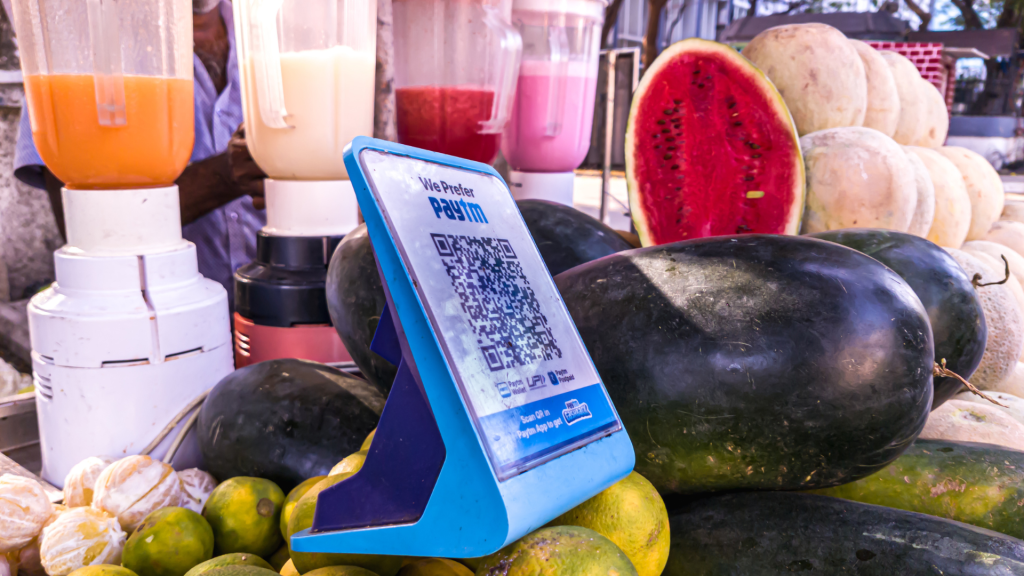Indian fintech giant Paytm is setting up shop in the United Arab Emirates, Saudi Arabia and Singapore, betting on an international expansion to drive growth after a bruising 2024.
A triple whammy of regulatory scrutiny, slowing profits and user decline took the wind out of its sails, and it’s been charting its recovery course ever since. Here’s the plan:
- Set up local subsidiaries in 6 months.
- Invest $2.3 million per country.
- Offer merchant payments and tech solutions organically or via partnerships, competitive investments, or local licenses.
Why the overseas push? Because India’s payments scene is getting crowded.
Paytm’s been feeling the heat from rivals like PhonePe and Google Pay, and things got worse when regulators forced it to shut down a banking unit last year over persistent compliance issues.
With those challenges at home, expanding offshore seems like a good play. But here’s the thing: its new target markets won’t exactly be a walk in the park.
Read more: It still takes courage to be a Paytm bull
Entrenched players
For one thing, all three are mature markets with a high concentration of credit card users and established digital payment services, Ranadurjay Talukdar, a partner in the financial services practice at EY, tells MONIIFY.
And it could take Paytm up to a year just to get its licenses sorted to operate in the new markets, he says. Analysts at ICICI securities agree, noting that the “expansions are still far away, and it will take some time before any numbers show up.”
Singapore is mostly cashless. More than three-quarters of consumers use credit cards, with more than half using PayNow, the government’s digital payments system, according to a 2024 survey by accounting firm Xero.
In the Middle East, national banks and telecom companies are pushing digital payments adoption through apps and e-wallets like Payit, Klip, STC Pay and e& money, among others.
The ecosystem is thriving thanks to early state-supported initiatives like UAE’s National Payment Systems Strategy and Saudi Arabia’s MADA network. Apple Pay, Google Pay and Samsung Pay are also in the mix and growing.
Read more: No Tyme to lose for Southeast Asia’s new fintech unicorn
Not too late
But Paytm has some tricks up its sleeve.
It started as an e-wallet service, and through several product evolutions — payments bank, UPI, Paytm Money — is now a business that juices SMEs and merchants through a host of services, on top of vanilla money transfers.
Think loans, point-of-sale devices, payment gateway and marketing services. The number of merchants using Paytm for this stuff has grown 50 times in the last five years.
Paytm declined to offer MONIIFY more details on its expansion plan. But on a call with analysts on Monday, CEO Vijay Shekhar Sharma confirmed that the company plans to start its overseas expansion with merchants.
“[Small and medium-sized enterprise] credit is missing everywhere. It’s a long-term business model,” he said.
Read more: MobiKwik IPO: The small fintech fish making big waves
The move comes at an interesting time. After a miserable year in 2024, its earnings and stock price have stabilized. A bunch of divestitures brought in about $500 million, and the management promises a clearer focus on the core business.
The company aims to be profitable within two quarters, and analysts think it can get there. UBS, Emkay Global Financial, and ICIC securities all have a “buy” rating on the stock, while UBS has a 30% upside forecast.
With the home market in recovery mode, global expansion might just be the bold bet Paytm needs. But cracking these markets? That’ll take some serious hustle.
Read more: Why Southeast Asia’s fintechs are making moves in the Middle East
Edited by Victor Loh and Tim Hume. If you have any tips, ideas or feedback, please get in touch: talk-to-us@moniify.com






